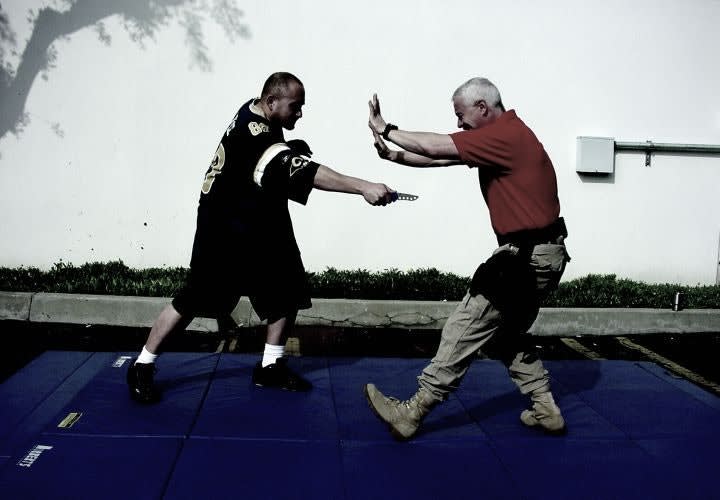Now let’s see how these three rules are actually applied to the attack scenario. For reasons of space I’m going to start directly with the knife attack (the actual strike) and not the details leading to the attack.
The first thing that happens to you is your reaction to the attack. This is also the phase that you have the least control over and it is made up of two parts. The first part is during the initiation of the attack where your mind is simply saying, “What is going on?” Although it lasts only a millisecond, you are basically frozen in time, which provides plenty of opportunity for the attacker to get in one, two, or maybe even three strikes, if you are caught totally off guard.
The second phase is when your protective instincts kick in. This is pure fight or flight mechanism and your conscious mind is still not in control. I call it the startle reflex and it leads to the universal fighting stance. Your arms and hands come up, the knees flex, your stomach tightens, and your shoulders hunch up and in. The next thing that happens is that you start to move, usually backward, away from the danger: the attack.
You can actually practice the above sequence to increase its efficiency. By combining mental imagery with the physical actions I have just described you can decrease the time it takes to go from the “oh, no” phase to the protective universal fighting stance. Simply practice it over and over at an ever-increasing speed. Start from a completely loose and relaxed state and instantly mimic the natural reactions as I have just described. This just might save you one or two strikes from the bad guy.
One thing to bear in mind is that you must take control of the situation as quickly as possible. One of the best ways to do so is to introduce the unexpected. For example, if a knife attack is overwhelming me I can move backward and drop to the ground. By doing this, I have taken away the target, presenting something far less vulnerable (my feet), minimizing potential lethal injury. I control the situation. This also allows me the fraction of a second I need to access my weapon.












